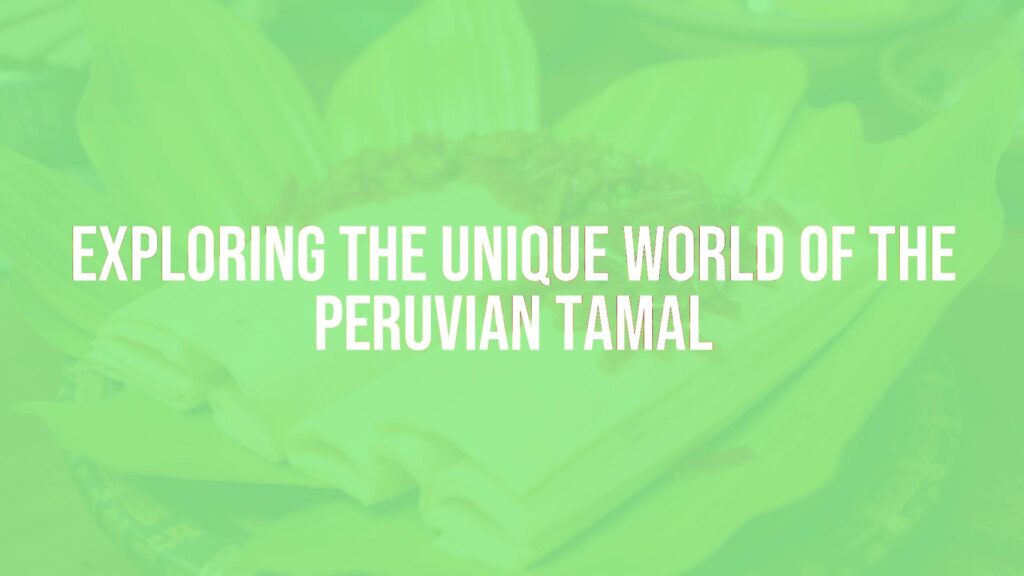The Distinctive Identity of the Peruvian Tamal
The Peruvian tamal stands out as a beloved dish in Peruvian culinary tradition. Unlike many other Latin American tamale varieties, the Peruvian tamal is notable for its bold seasonings, vibrant color, and moist texture, offering a taste experience that is simultaneously comfortingly familiar and uniquely regional. Wrapped traditionally in banana leaves and enjoyed across the country, this tamal is a testament to Peru’s rich history and diverse flavors.
Origins and Historical Context
The story of the Peruvian tamal dates back to pre-Columbian times, tying into ancient traditions of maize-based dishes prevalent throughout the Andes and coastal areas. Over time, the tamal absorbed influences from Spanish, African, and indigenous cultures, resulting in a version that is distinctively Peruvian. It has historically been a festive food—served at family celebrations, holidays, and street gatherings—symbolizing hospitality and communal enjoyment.
Characteristic Ingredients and Preparation
Peruvian tamales are typically crafted from white hominy corn (maíz blanco), which is soaked, ground, and seasoned. Unlike Mexican tamales that often use lard, these tamales commonly include a blend of vegetable oil and pork or chicken drippings, resulting in a richer and often more fragrant dough. A unique addition is the vibrant yellow hue from ají amarillo (Peruvian yellow chili pepper) and annatto, both of which impart mild heat and appealing color.
The heart of a Peruvian tamal is its filling, most often seasoned pork or chicken, marinated with garlic, cumin, and ají panca (a mild red chili pepper). Olives, hard-boiled eggs, and roasted peanuts are signature inclusions, each contributing layers of texture and flavor. The mixture is carefully wrapped in banana leaves—sometimes corn husks—imparting a subtle earthiness during the cooking process.
Flavor Profile, Texture, and Appearance
Steamed to perfection, the Peruvian tamal boasts a moist and tender consistency, often more yielding than its Mexican counterparts. The dough is rich, slightly crumbly, and deeply flavored with spices and aromatic chilies. The fillings balance savory, subtly sweet, and mildly spicy notes, while the banana leaf lends a pleasant herbal aroma. Visually, the tamal is golden to bright yellow, sometimes speckled with red from peppers.
Cultural and Regional Importance
This tamal variety is enjoyed from Lima’s bustling markets to the highland towns, embodying Peru’s diverse culinary identity. It is a breakfast staple on weekends, a must-have on festive tables, and a comfort food for Peruvians abroad. Each region may tweak the classic tamal recipe—coastal areas favor pork and chicken fillings, while Andean versions might incorporate local herbs and even cheese.
Popular Variations and Ingredient Swaps
Some common adaptations include vegetarian tamales with Andean cheese and corn, or sweet tamales (tamales dulces) prepared with cinnamon and raisins. Regional differences are marked by the choice of chilies—ají amarillo or mirasol in Lima, rocoto for added heat elsewhere—and the type of encasing leaf. For those unable to source banana leaves, parchment paper is a practical substitute, though it alters the aroma slightly.
Serving Suggestions and Pairings
Peruvian tamales are customarily served warm, often alongside salsa criolla—a tangy onion and lime relish—or with a simple drizzle of lime juice. They make a satisfying meal with hot coffee or spiced Peruvian hot chocolate in the morning, and pair beautifully with refreshing beverages like chicha morada (purple corn drink) or a crisp local lager. Whether eaten as street food or shared at home, these tamales bring a taste of Peruvian heritage to every bite.

